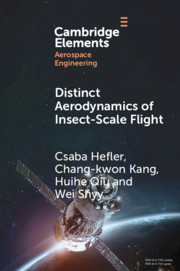Element contents
Distinct Aerodynamics of Insect-Scale Flight
Published online by Cambridge University Press: 27 April 2021
Summary
Keywords
- Type
- Element
- Information
- Online ISBN: 9781108874229Publisher: Cambridge University PressPrint publication: 27 May 2021



